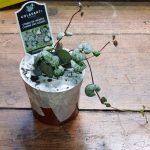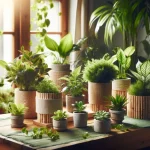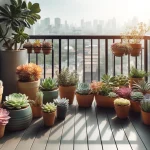This post may contain affiliate links. If you buy something from one of our links we may earn a commission. Thanks
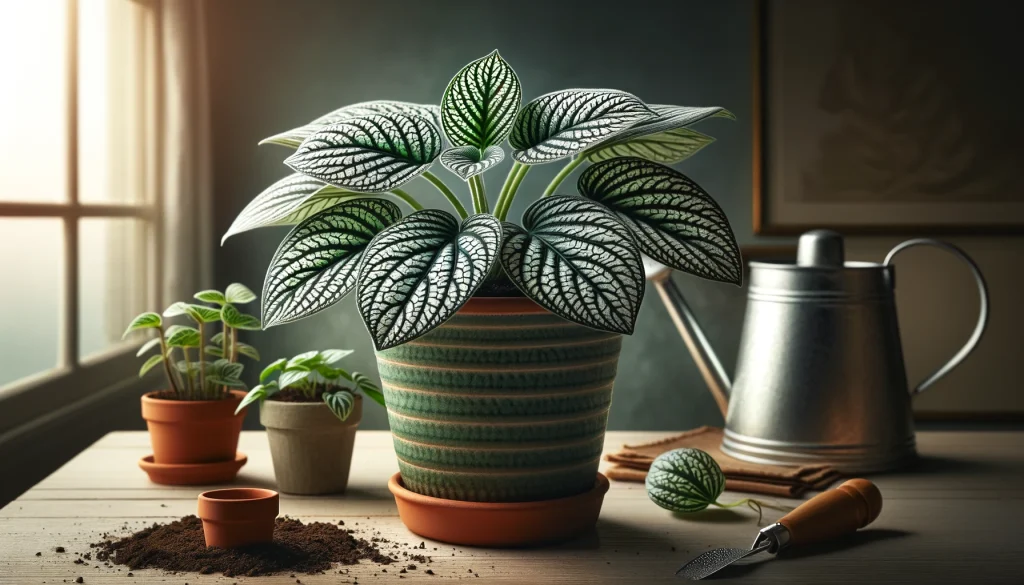
Dive into Nerve Plant Care to keep your Fittonia lush! Discover tips for light, watering, and more for these eye-catching indoor plants.
Nerve Plant Care Key Takeaways:
Introduction: Unraveling the Mysteries of the Nerve Plant Care
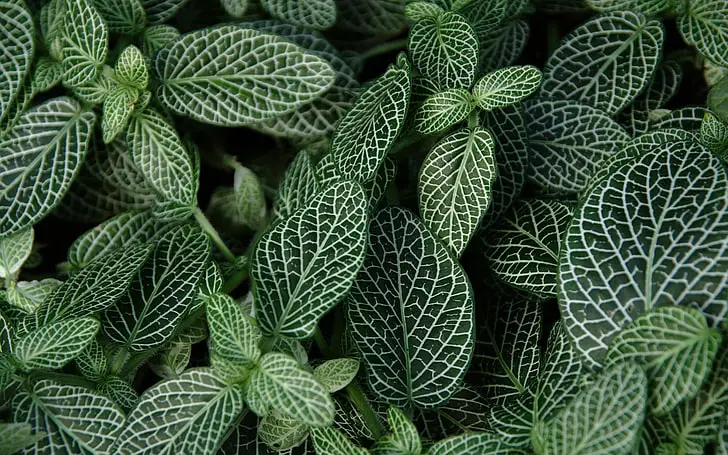
Howdy, folks! Welcome to the vibrant world of nerve plants, also known as Fittonia.
These little green gems are more than just pretty leaves; they’re a ticket to adding a splash of color and life to your indoor jungle.
Now, if you’re thinking, What’s the big deal about a plant with some fancy veins? stick around.
We’re about to dive into the fascinating world of Fittonia care, where every leaf tells a story.
A Brief Overview of the Nerve Plant (Fittonia)
Fittonia, with its intricate vein patterns and lush foliage, isn’t just another houseplant. It’s a living piece of art!
Native to the tropical rainforests of South America, this plant has made its way into the hearts of gardeners worldwide.
But here’s the kicker – it’s not just about looks. These plants are like the canaries in the coal mines of your home, signaling when the environment’s off-kilter.
The Importance of Proper Care for Healthy Growth
Now, don’t let its beauty fool you. The nerve plant is a bit of a diva when it comes to care.
It demands just the right amount of light, water, and humidity. But don’t sweat it!
With a few tips and tricks, you’ll have your Fittonia flourishing in no time. And trust me, when you see those vibrant leaves perk up, you’ll feel like a proud plant parent.
So, are you ready to embark on this green journey? Let’s roll up our sleeves and dive into the world of nerve plant care!
1. Nerve Plant Care/Fittonia Plant Care: Secrets to a Thriving Indoor Jungle
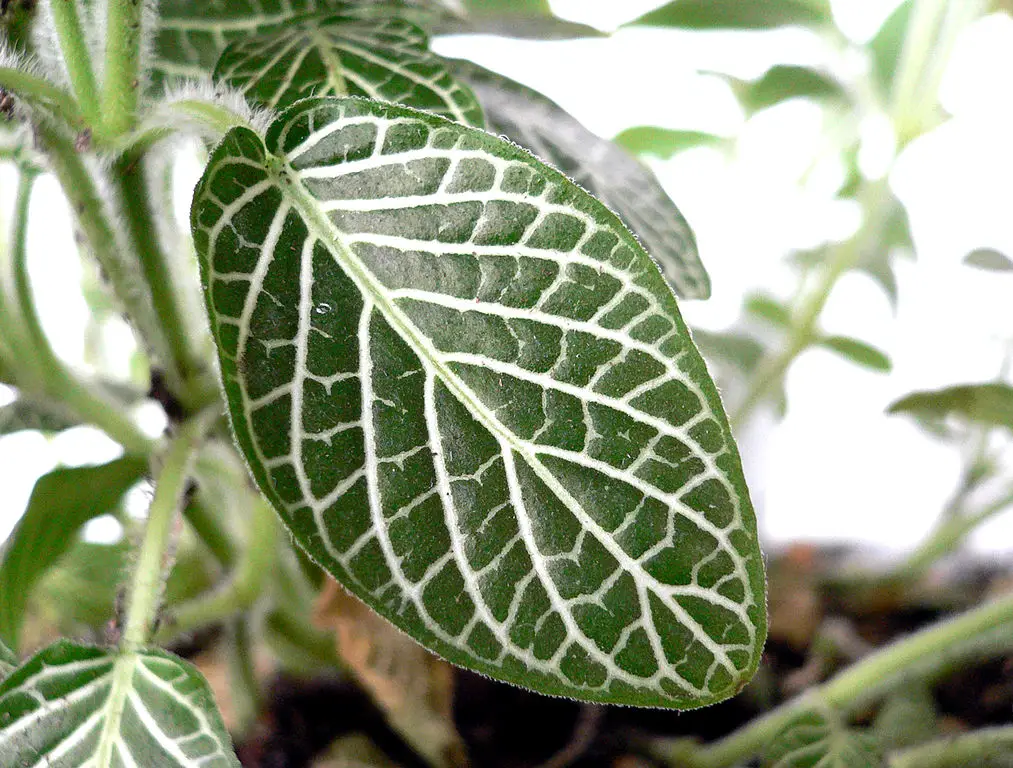
Ah, the nerve plant, a.k.a. Fittonia, a.k.a. the drama queen of the indoor plant world.
Don’t let that nickname scare you, though. With a bit of know-how, you can keep your Fittonia happy and thriving, turning your home into a lush, green oasis.
So, let’s dive into the nitty-gritty of Fittonia care.
Light It Up Right
First things first, let’s talk about light. Fittonia plants are like that friend who loves the sun but can’t handle the heat.
They adore bright, indirect light. Too much direct sunlight and their leaves will throw a fit, fading and scorching.
But in low light, they’ll sulk and stop growing. The sweet spot? Near a window with sheer curtains or in a well-lit room, just out of the sun’s direct rays.
Water Wisdom
Now, onto watering. These plants are thirsty but not too thirsty. The goal is to keep the soil consistently moist, not waterlogged.
Think of it like making the perfect cup of tea – you want it just right. Stick your finger about an inch into the soil; if it feels dry, it’s time for a drink.
But remember, no soggy bottoms! Drainage is key to avoiding root rot.
Using Self-Watering Planters: A Stress-Free Solution
Keeping your Fittonia perfectly watered can be a bit of a balancing act. Too much water, and you risk root rot.
Too little, and your plant might wilt. However, self-watering planters offer a stress-free solution to maintain the ideal watering balance for your Fittonia.
How Do Self-Watering Planters Work?
Self-watering planters have a reservoir at the bottom of the pot that holds water.
The soil above is separated from this reservoir by a barrier, with a wicking system that draws water up into the soil as needed.
This setup ensures that your Fittonia gets a consistent moisture level without the risk of overwatering.
Benefits of Self-Watering Planters
- Consistent Moisture: These planters provide a steady supply of water, keeping the soil evenly moist, which is perfect for moisture-loving plants like Fittonia.
- Less Frequent Watering: With a reservoir of water available, you don’t need to water your plant as often, making them ideal for busy plant parents or for when you’re away on a short trip.
- Healthier Roots: By avoiding overwatering, self-watering planters help prevent root rot and other water-related issues, promoting healthier root growth.
- Easy to Use: Self-watering planters are user-friendly and take the guesswork out of watering, making them great for both experienced and novice gardeners.
Tips for Using Self-Watering Planters
- Check the Reservoir: Regularly check the water level in the reservoir and refill it as needed to ensure your Fittonia has a constant water supply.
- Use Well-Draining Soil: Even with a self-watering planter, it’s important to use a well-draining soil mix to prevent waterlogging.
- Monitor Your Plant: Keep an eye on your Fittonia for any signs of distress, and adjust your care routine as needed.
A Perfect Match
Self-watering planters can be a game-changer for keeping your Fittonia happy and hydrated. They provide a convenient and effective way to maintain the perfect watering balance, letting you enjoy the beauty of your plant with less worry and effort.
Humidity Hacks
Humidity is where the nerve plant gets its drama queen reputation. It loves high humidity, just like its tropical rainforest home.
If your home is drier than a desert, consider misting your Fittonia regularly, placing it on a pebble tray with water, or using a humidifier to keep the air moist. Your plant will thank you with lush, vibrant leaves.
Feeding Frenzy
Even plants need a good meal, and Fittonia is no exception. During the growing season (spring and summer), feed your plant a balanced liquid fertilizer every two weeks.
But come fall and winter, give it a break. Overfeeding can lead to fertilizer burn, and nobody wants that.
Pruning and Grooming
Last but not least, let’s talk about pruning. Fittonia can get a bit leggy if left to its own devices.
To keep it bushy and full, give it a little trim now and then. Snip off any long stems or yellowing leaves to encourage new growth.
Plus, it’s a great way to keep your plant looking tidy and fresh.
And there you have it, folks! With these essential care tips, your Fittonia will be thriving and bringing a touch of the tropics to your home in no time. Happy gardening!
2. Why Is It Called a Nerve Plant? Unveiling the Mystery
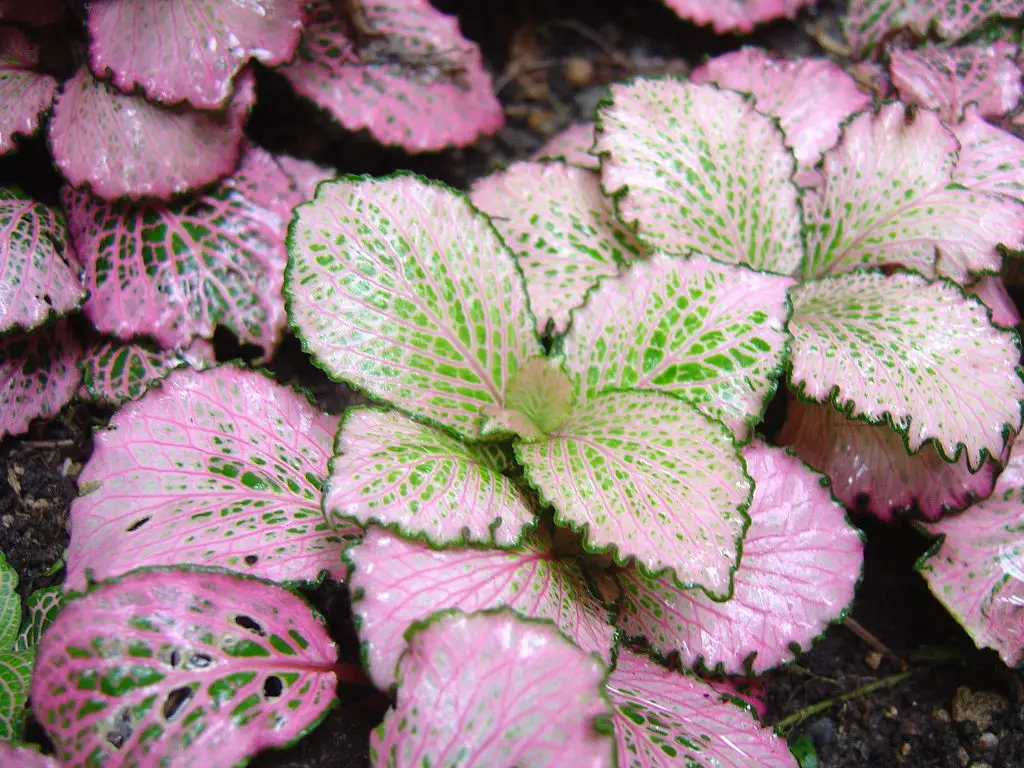
Ever wondered why Fittonia is called a nerve plant? No, it’s not because it gets nervous easily (although it is a bit finicky).
The name actually has everything to do with its striking appearance. Let’s dive into the story behind this intriguing name.
A Name That Paints a Picture
The nerve plant’s name is a nod to its most distinctive feature: its vibrant, nerve-like veins that crisscross the leaves like a roadmap.
These veins aren’t just for show; they’re the plant’s lifeline, carrying water and nutrients to every leafy corner.
But it’s their bold, contrasting colors that really steal the spotlight, making the Fittonia look like it’s been plugged into an electric socket. Talk about making a statement!
A Symbol of Strength and Connectivity
But there’s more to the name than just looks. The nerve-like veins symbolize strength and connectivity, reminding us of the intricate networks that sustain life, both in plants and in our own bodies.
It’s a beautiful reminder of how everything in nature is connected, working together in harmony.
So, the next time you gaze at your nerve plant, remember that it’s not just a pretty face.
It’s a living symbol of the beauty and complexity of nature, all wrapped up in a vibrant package. How cool is that?
3. Nerve Plant Benefits/Fittonia Benefits: More Than Just a Pretty Face
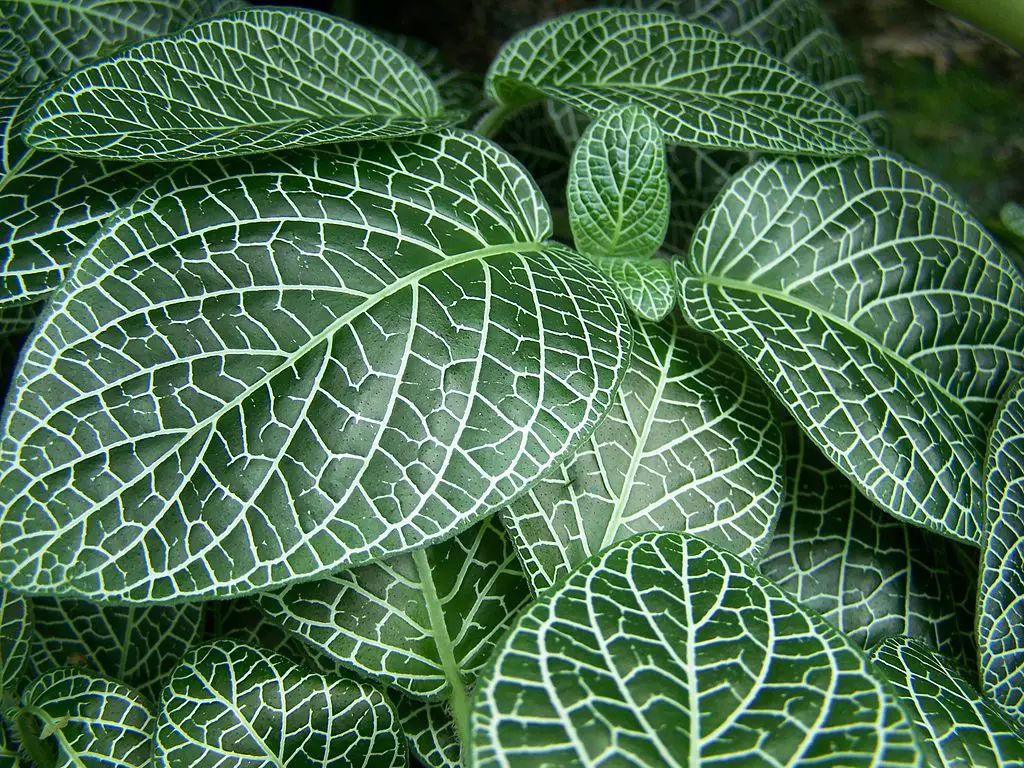
So, you’ve got a Fittonia, and it’s looking fabulous. But did you know that this little plant is more than just a decorative piece?
That’s right, folks! Fittonia plants come with a bunch of benefits that make them a fantastic addition to any home or office. Let’s dive into the perks of having this leafy friend around.
A Breath of Fresh Air
First up, let’s talk air quality. Fittonia plants, like many indoor plants, are natural air purifiers.
They work their magic by absorbing toxins and pollutants from the air, like tiny green superheroes.
This means you get cleaner, fresher air just by having a Fittonia around. Take a deep breath and thank your leafy buddy!
Stress-Buster Extraordinaire
Feeling stressed? Your Fittonia’s got your back. Studies have shown that having plants around can reduce stress and boost your mood.
Just looking at those vibrant leaves can be a calming experience, giving your brain a little nature break.
So, next time you’re feeling frazzled, take a moment to chill with your Fittonia. It’s like a mini spa day for your mind.
Aesthetic Appeal
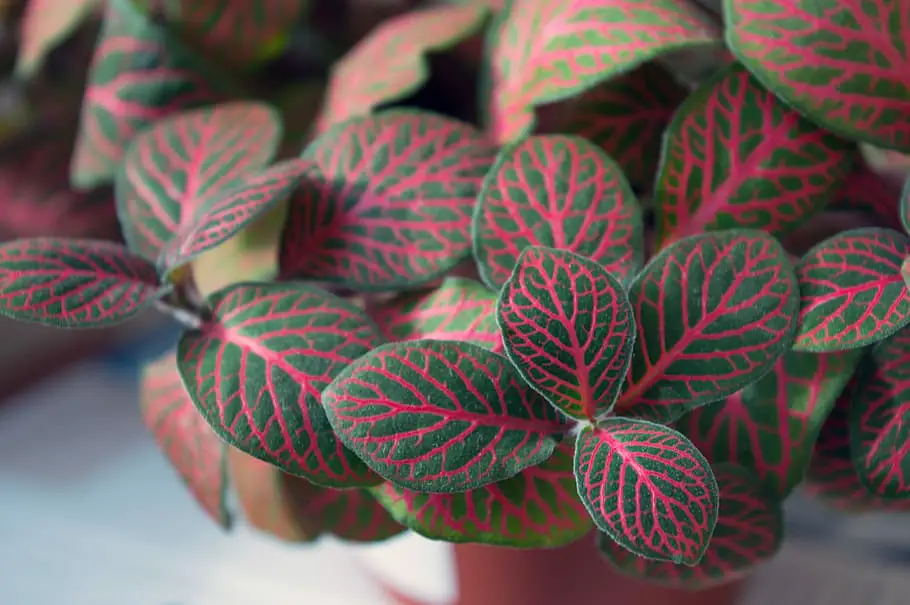
Let’s not forget the obvious – Fittonias are stunning! With their unique leaf patterns and colors, they add a pop of vibrancy to any space.
They’re perfect for livening up a dull corner or adding a touch of nature to your decor.
Plus, they’re great conversation starters. Who wouldn’t want to brag about their beautiful nerve plant?
Easy Peasy Care
Last but not least, Fittonias are relatively easy to care for, making them a great choice for both seasoned plant parents and beginners.
As long as you keep their soil moist and give them enough light, they’ll reward you with their stunning foliage.
It’s a low-maintenance relationship with high-reward benefits!
So, there you have it! Fittonia plants are not just easy on the eyes; they’re good for your health, mood, and indoor environment. What’s not to love?
4. Fittonia Colors: A Rainbow of Options
Step right up, folks, and feast your eyes on the dazzling world of Fittonia colors!
These plants are like the chameleons of the indoor garden, coming in a kaleidoscope of hues and patterns.
Whether you’re into bold and bright or soft and subtle, there’s a Fittonia variety out there for you. Let’s take a stroll through this colorful landscape.
The Classic Green and White
First up, we have the classic Fittonia with its deep green leaves and crisp white veins. It’s like the plant version of a timeless black and white movie – elegant, understated, and always in style. This variety is perfect for those who appreciate the beauty of simplicity.
Pretty in Pink
For those who like a splash of color, say hello to the pink-veined Fittonia. These beauties have leaves that look like they’ve been delicately painted with shades of pink, from soft blush to vibrant fuchsia. They’re perfect for adding a pop of color to your plant collection.
Red Hot Vibes
Feeling fiery? Check out the red-veined Fittonia. With leaves that boast bold red veins against a dark green backdrop, this variety is sure to turn up the heat in your indoor garden. It’s like having a little piece of the tropics right in your living room.
A Mosaic of Colors
But wait, there’s more! Fittonias come in a range of other color combinations, from yellow and green to purple and pink.
Some varieties even have a mosaic-like pattern, with veins that create intricate designs on the leaves. It’s like having a living work of art in your home.
So, whether you’re drawn to the classic elegance of green and white or the vibrant energy of pink and red, there’s a Fittonia color that’s perfect for you.
Go ahead, pick your favorite, and add a splash of color to your indoor garden!
5. Types of Fittonia: A World of Variety
Welcome to the diverse world of Fittonia species! These plants come in all shapes and sizes, each with its own unique charm.
From the compact and bushy to the sprawling and vine-like, there’s a Fittonia for every taste. Let’s take a closer look at some of the standout types.
Fittonia ‘Verschaffeltii’ (Argyroneura Group)
Meet the classic Fittonia, also known as the nerve plant or mosaic plant. This variety is known for its deep green leaves crisscrossed with striking white or silver veins.
It’s a popular choice for terrariums and indoor gardens, thanks to its low-growing, spreading habit.
Fittonia ‘Mini White’
If you’re short on space, Fittonia ‘Mini White’ might be the perfect fit. This compact variety has smaller leaves and a tight growth habit, making it ideal for small pots or terrariums. And with its delicate white veining, it’s a little plant with big appeal.
Fittonia ‘Red Anne’
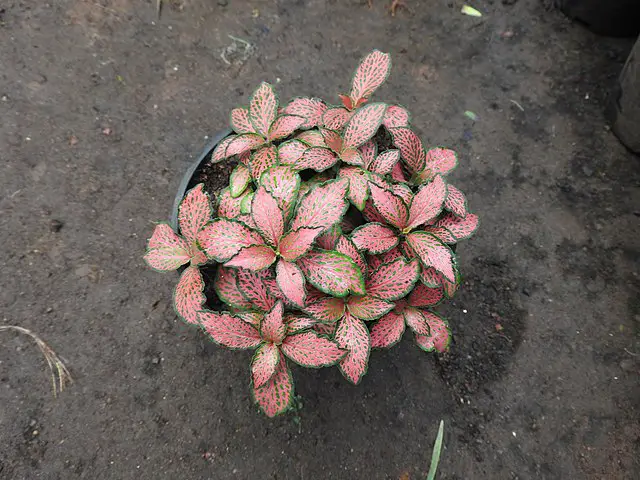
For a splash of color, check out Fittonia ‘Red Anne.’ This variety boasts vibrant red veins that stand out against its dark green leaves. It’s a showstopper that’s sure to add some drama to your indoor garden.
Fittonia ‘Pink Angel’
Soft and sweet, Fittonia ‘Pink Angel’ features pale green leaves with soft pink veins. It’s a gentle beauty that brings a touch of femininity and softness to any space.
Fittonia ‘Skeleton’
Looking for something a little edgier? Fittonia ‘Skeleton’ might be right up your alley. This variety has a more pronounced vein pattern, giving it a bold, graphic look. It’s like the rock star of the Fittonia world.
Fittonia ‘Fortissimo’
And for those who like their plants big and bold, there’s Fittonia ‘Fortissimo.’ This variety has larger leaves and a more robust growth habit, making it a great choice for a statement piece in your indoor garden.
So, whether you’re drawn to the classic elegance of Fittonia ‘Verschaffeltii’ or the bold drama of Fittonia ‘Red Anne,’ there’s a type of Fittonia out there for you. Go ahead, explore the variety, and find your perfect plant match!
6. Are Nerve Plants Toxic? A Closer Look at Safety
When it comes to bringing plants into your home, safety is a top priority, especially if you’ve got curious pets or little ones running around.
So, you might be wondering, Are nerve plants toxic? Well, I’ve got some good news for you!
Safe for Pets and Humans
Fittonia plants, also known as nerve plants, are non-toxic to both humans and animals. That’s right, folks!
These leafy beauties are as safe as they are stunning. So, if your cat decides to take a nibble or your toddler gets a little too hands-on, there’s no need to panic. They’re not going to end up with a tummy ache from this plant.
A Peace of Mind Addition to Your Home
This non-toxic nature makes Fittonia an excellent choice for households with pets or children.
You can place them in reach without worrying about any harmful consequences. It’s a peace of mind that allows you to enjoy the beauty of your nerve plant without any added stress.
Always Better to Be Cautious
However, just because they’re non-toxic doesn’t mean they should be on the menu.
While a small nibble might not cause harm, it’s always best to discourage pets and children from chewing on any houseplants.
After all, it’s better to be safe than sorry, and some plants can cause digestive upset even if they’re not toxic.
A Breath of Fresh Air
So, there you have it! Nerve plants are a safe and beautiful addition to any home.
They bring a pop of color, a touch of nature, and a breath of fresh air, all without any worry about toxicity. It’s just another reason to love these vibrant little plants!
7. Size of Nerve Plant: Setting Growth Expectations
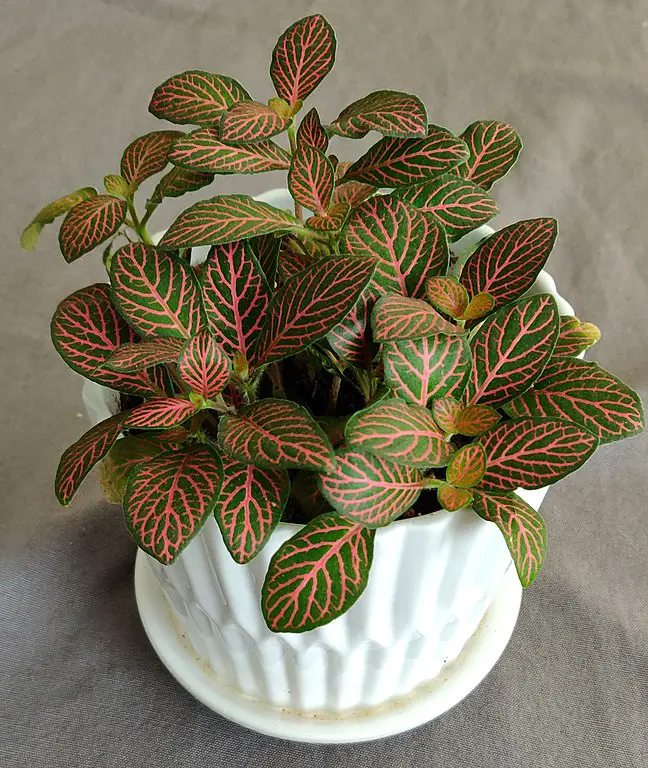
When it comes to indoor plants, size matters. You want to make sure your green friends fit just right in your space, without turning your living room into a jungle (unless that’s your vibe, of course).
So, what can you expect in terms of size when it comes to the nerve plant? Let’s break it down.
Compact and Manageable
First things first, Fittonia plants are known for their compact size. They’re not the type to grow into towering giants.
On average, a healthy nerve plant will reach about 3 to 6 inches in height and spread out to about 12 to 18 inches in width.
It’s the perfect size for a desk, shelf, or tabletop display.
Growth Habits
Now, let’s talk about growth habits. Fittonia plants have a spreading, trailing tendency.
This means they tend to grow outward rather than upward, which is why they’re often used in terrariums or as ground cover in mixed planters.
Their lush foliage creates a beautiful, dense mat of leaves that can really fill out a space.
Keeping It in Check
If you’re worried about your Fittonia getting too sprawly, don’t fret. Regular pruning can help keep its growth in check.
Just snip off any leggy stems to encourage a bushier, more compact shape. Plus, it’s a great way to keep your plant looking fresh and tidy.
A Slow Grower
It’s also worth noting that Fittonia plants are relatively slow growers. So, don’t expect rapid changes in size. This slow growth rate makes them easy to manage and maintain, especially for those who are new to plant parenting or have limited space.
Expectations vs. Reality
So, there you have it! While your nerve plant might not reach towering heights, its compact size and spreading habit make it a versatile and manageable addition to any indoor garden.
Just give it some love and attention, and watch it flourish within its cozy dimensions.
8. Growth Rate of Fittonia: Patience Is a Virtue

If you’re expecting your Fittonia to grow faster than a speeding bullet, you might need to pump the brakes.
These plants are more of a slow and steady wins the race kind of deal. But don’t let that deter you!
Understanding their growth rate and what influences it can help you provide the best care for your leafy friend.
A Leisurely Pace
On average, Fittonia plants have a moderate to slow growth rate. In ideal conditions, you might see a few inches of growth each year.
But don’t expect any overnight miracles. These plants like to take their time, which makes them perfect for those who appreciate the gradual beauty of plant growth.
Factors Affecting Growth
So, what factors can influence the growth rate of your Fittonia? Let’s take a look:
- Light: Fittonia plants prefer bright, indirect light. Too much direct sunlight can scorch their leaves, while too little light can slow down their growth. Finding that sweet spot is key.
- Water: Keeping the soil consistently moist (but not waterlogged) is crucial. Irregular watering can stress the plant and hinder its growth.
- Humidity: As tropical plants, Fittonias thrive in high humidity. Low humidity can cause their growth to stall, so consider using a humidifier or a pebble tray to keep the air moist.
- Temperature: These plants prefer warm temperatures between 60-80°F (16-27°C). Avoid exposing them to cold drafts or sudden temperature changes.
- Fertilizer: During the growing season (spring and summer), feed your Fittonia with a balanced liquid fertilizer every two weeks to support its growth.
- Pruning: Regular pruning can encourage bushier growth and prevent the plant from becoming leggy.
Embrace the Journey
While your Fittonia might not grow at lightning speed, watching its gradual progress can be a rewarding experience.
Plus, its slow growth rate makes it easier to maintain and keep in shape. So, embrace the journey and enjoy the lush beauty of your Fittonia as it unfolds at its own pace.
9. Where to Put Nerve Plant? Finding the Perfect Spot
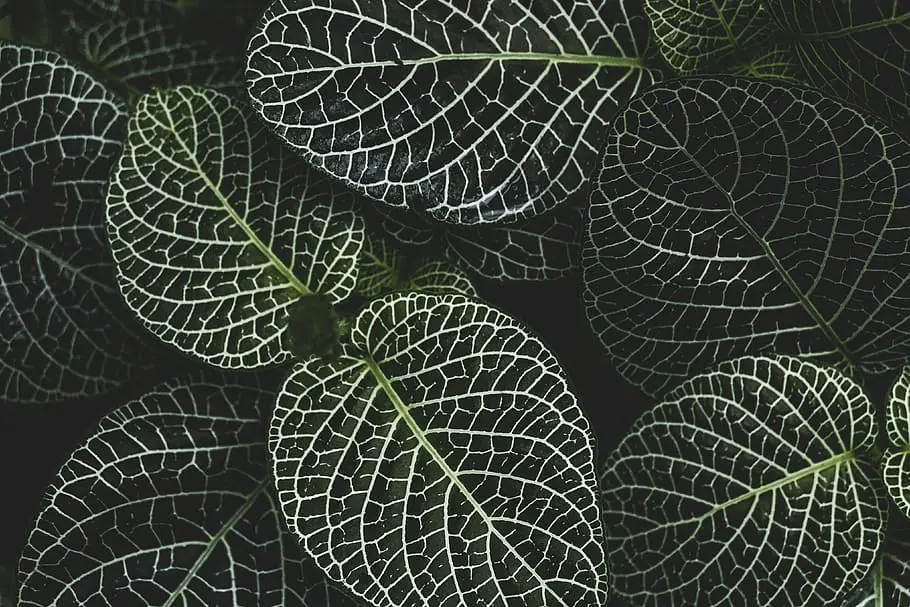
So, you’ve got your hands on a beautiful Fittonia, and now you’re wondering, Where should I put this little gem? Don’t worry, I’ve got you covered!
Finding the ideal spot for your nerve plant is key to keeping it happy and healthy. Let’s explore the best locations and conditions for your Fittonia to thrive.
Let There Be Light (But Not Too Much)
Light is a big deal for Fittonia plants. They love bright, indirect light but can’t handle direct sunlight, which can scorch their delicate leaves.
A spot near a north- or east-facing window is ideal. If you only have south- or west-facing windows, just make sure to shield your plant with sheer curtains or place it a bit farther from the window.
Keep It Cozy
Temperature is another important factor. Fittonia plants prefer a warm environment, ideally between 60-80°F (16-27°C).
Avoid placing them near drafty windows or doors, air conditioning vents, or heat sources, as sudden temperature changes can stress them out.
Humidity Is Key
Remember, Fittonias are tropical plants, so they love a humid environment.
Bathrooms with natural light can be a great spot, as the humidity from showers keeps the air moist.
Alternatively, you can place your plant on a pebble tray filled with water or use a humidifier to increase humidity levels.
Consider Your Space
Think about where your Fittonia can be appreciated and where it fits in with your decor.
These plants are perfect for adding a pop of green to bookshelves, desks, or tabletops.
Just make sure the spot you choose meets their light and temperature needs.
A Little Elevation
If you have pets or small children, consider placing your Fittonia on a higher shelf or in a hanging planter.
This way, it’s out of reach but still adds a touch of nature to your space.
The Perfect Fit
Finding the perfect spot for your Fittonia might take a bit of trial and error. Observe your plant and see how it responds to different locations.
With the right light, temperature, and humidity, your Fittonia will flourish and bring a vibrant touch to any room.
10. Nerve Plant Growing Conditions: Creating the Ideal Environment
Creating the perfect environment for your nerve plant is like setting the stage for a show-stopping performance.
With the right conditions, your Fittonia will take center stage and shine in all its leafy glory.
Let’s dive into the details of creating the optimal environment and climate for your Fittonia to thrive.
Lighting Up the Stage
First things first, let’s talk about light. Fittonia plants prefer bright, indirect light to mimic the dappled sunlight of their natural rainforest habitat.
Place them near a window where they can bask in the glow without getting sunburned by direct rays.
If natural light is limited, consider using grow lights to provide the necessary illumination.
Setting the Temperature
When it comes to temperature, Fittonia plants like it warm but not too hot. Aim for a range of 60-80°F (16-27°C) for optimal growth.
They’re not fans of cold drafts or sudden temperature fluctuations, so keep them away from drafty windows and doors, as well as heating and cooling vents.
Humidity: The Key to Lush Leaves
Humidity is a big deal for nerve plants. They thrive in high humidity environments, so aim for a humidity level of 60-70%.
You can achieve this by misting your plant regularly, placing it on a pebble tray filled with water, or using a humidifier.
In a pinch, placing your Fittonia in a bathroom with natural light can also provide the humid conditions it loves.
Soil and Drainage: Laying the Foundation
The right soil is crucial for Fittonia plants. Use a well-draining potting mix, such as a mix of peat moss, perlite, and vermiculite, to ensure proper drainage and prevent root rot.
A pot with drainage holes is a must to allow excess water to escape.
Feeding Your Star Performer
During the growing season (spring and summer), feed your Fittonia a balanced liquid fertilizer every two weeks to support its growth.
In the fall and winter, reduce feeding to once a month or less, as growth slows down during this time.
The Perfect Set-Up
With the right light, temperature, humidity, soil, and feeding schedule, you’ll create the ideal environment for your nerve plant to thrive.
It’s all about finding the perfect balance to keep your Fittonia happy and healthy. So, roll out the red carpet and watch your plant take center stage!
11. Best Soil for Nerve Plant: A Foundation for Growth
Choosing the right soil for your nerve plant is like selecting the perfect pair of shoes for a long walk – it needs to be comfortable, supportive, and just right for the journey ahead.
Let’s dig into the best soil types and mixtures for healthy roots, with a nod to sustainability.
Why Coco Coir and Perlite?
When it comes to soil, sustainability is key. That’s why I recommend using a mix of coco coir and perlite for your Fittonia.
Coco coir is a renewable, eco-friendly alternative to peat moss, made from coconut husk fibers.
It’s excellent at retaining moisture while also providing good drainage – just what your nerve plant needs.
Perlite, a volcanic glass that’s been heated and expanded, adds aeration to the mix, preventing compaction and ensuring that your plant’s roots can breathe and grow freely.
The Perfect Mix
A good starting point for your Fittonia’s soil mix is to combine 60% coco coir with 40% perlite.
This blend will provide the right balance of moisture retention and drainage, creating an ideal environment for healthy root growth.
If you want to add a bit more nutrients to the mix, you can also incorporate a small amount of worm castings or compost.
Adjusting for Your Plant’s Needs
Every plant is unique, and your Fittonia might have specific needs depending on its environment and growth stage.
If you notice that the soil is drying out too quickly, consider adding a bit more coco coir to increase moisture retention.
Conversely, if the soil seems too wet or heavy, add more perlite to improve drainage.
Repotting with Care
When it’s time to repot your Fittonia, gently remove it from its current pot and shake off any excess soil from the roots.
Place it in a new pot with fresh soil mix, making sure not to bury the stems too deep.
Water it well after repotting to help settle the soil and reduce transplant shock.
A Sustainable Foundation
By choosing a mix of coco coir and perlite for your Fittonia’s soil, you’re not only providing the ideal conditions for healthy growth but also making a more sustainable choice for the planet.
It’s a win-win for your plant and the environment!
12. How Often to Water Nerve Plant: Quenching Your Plant’s Thirst
Watering your nerve plant is like making the perfect cup of tea – it’s all about finding the right balance. Not too much, not too little, but just right.
Let’s dive into the watering frequency and tips for keeping your Fittonia hydrated and happy.
Finding the Sweet Spot
The key to watering your nerve plant is to keep the soil consistently moist but not waterlogged.
Overwatering can lead to root rot, while underwatering can cause the leaves to wilt and lose their vibrant color.
Aim to water your Fittonia when the top inch of soil feels dry to the touch. This might be once a week, but it can vary depending on factors like temperature, humidity, and light levels.
Tips for Perfect Hydration
- Use Lukewarm Water: Fittonia plants are sensitive to temperature changes, so use lukewarm water to avoid shocking their roots.
- Water Evenly: Make sure to water your plant evenly, covering the entire surface of the soil. This ensures that all the roots get a good drink.
- Drainage Is Key: Use a pot with drainage holes to allow excess water to escape. This helps prevent water from pooling at the bottom and causing root rot.
- Check Humidity: Fittonias love high humidity, so if your home is dry, you might need to water more frequently. Consider using a pebble tray or humidifier to increase humidity levels.
- Adjust for Seasons: Your plant will need more water during the growing season (spring and summer) and less during the dormant season (fall and winter).
- Monitor and Adjust: Keep an eye on your plant and the soil moisture. If you notice signs of overwatering (yellowing leaves, soggy soil) or underwatering (dry, crispy leaves), adjust your watering frequency accordingly.
A Happy, Hydrated Plant
By following these watering tips and paying attention to your plant’s needs, you’ll keep your nerve plant well-hydrated and thriving. Remember, every plant is unique, so it’s all about finding the right watering rhythm for your Fittonia.
13. Nerve Plant Propagation: Growing New Plants from Your Fittonia
Propagation is like the magic trick of the plant world – turning one plant into many. The good news is, that propagating your nerve plant is relatively easy!
With a little patience and the right technique, you can grow a whole family of Fittonias.
Let’s explore the methods and steps for successful nerve plant propagation.
Method 1: Stem Cuttings in Water
- Choose Healthy Stems: Look for healthy, non-flowering stems with at least two to three leaf nodes (the points where leaves emerge).
- Make the Cut: Using clean, sharp scissors or pruning shears, cut a 4-6 inch section of stem just below a leaf node.
- Prepare the Cutting: Remove the leaves from the bottom half of the cutting to expose the nodes.
- Place in Water: Put the cutting in a jar or glass of water, ensuring that at least one node is submerged. The remaining leaves should be above the water line.
- Wait for Roots: Place the jar in a bright spot with indirect light and wait for roots to form. This can take a few weeks, so be patient!
- Plant in Soil: Once the roots are about an inch long, you can transfer the cutting to a pot with well-draining soil.
Method 2: Stem Cuttings in Soil
- Prepare the Cutting: Follow the same steps as above to prepare your stem cutting.
- Plant Directly in Soil: Instead of placing the cutting in water, plant it directly into a pot filled with moist, well-draining soil. Make sure at least one node is buried in the soil.
- Create a Humid Environment: Cover the pot with a plastic bag or place it in a mini greenhouse to create a humid environment, which helps encourage root growth.
- Wait for Growth: Keep the soil moist and place the pot in a bright spot with indirect light. In a few weeks, you should see new growth, indicating that the cutting has successfully rooted.
Propagation Tips
- Always use clean tools to prevent the spread of disease.
- Propagate in the spring or summer when the plant is actively growing for the best results.
- If you’re propagating in water, change the water every few days to keep it fresh.
- Be patient! Propagation takes time, but it’s rewarding to see new plants grow from your cuttings.
Growing Your Fittonia Family
Propagation is a fun and cost-effective way to expand your collection of nerve plants.
Whether you choose to propagate in water or soil, the joy of watching new roots and leaves emerge is unbeatable. Happy propagating!
14. Common Fittonia Problems: Nipping Issues in the Bud
Even the most well-cared-for Fittonia can run into problems now and then. But with a little know-how, you can quickly identify and address these issues, keeping your nerve plant healthy and happy.
Let’s explore some common Fittonia problems and how to tackle them.
Yellowing Leaves
- Cause: Overwatering, poor drainage, or nutrient deficiencies.
- Solution: Check the soil moisture and drainage. If it’s soggy, let it dry out before watering again. Ensure your pot has drainage holes and consider repotting in fresh, well-draining soil. If the issue persists, a balanced liquid fertilizer can help address nutrient deficiencies.
Brown, Crispy Leaves
- Cause: Underwatering, low humidity, or direct sunlight.
- Solution: Increase watering frequency, mist your plant regularly, and move it away from direct sunlight. Using a pebble tray or humidifier can also help boost humidity levels.
Leggy Growth
- Cause: Insufficient light.
- Solution: Move your Fittonia to a brighter spot with indirect light. Pruning leggy stems can also encourage bushier growth.
Dropping Leaves
- Cause: Temperature stress, sudden changes in environment, or overwatering.
- Solution: Ensure your plant is kept in a stable environment with temperatures between 60-80°F (16-27°C). Avoid placing it near drafty windows or heating/cooling vents. Check the soil moisture and adjust your watering schedule as needed.
Pests
- Common Pests: Spider mites, mealybugs, and aphids.
- Solution: Isolate the affected plant to prevent the spread of pests. Use a damp cloth to gently wipe off visible pests. For more severe infestations, treat your plant with insecticidal soap or neem oil, following the product instructions.
Prevention Is Key
The best way to deal with common Fittonia problems is to prevent them in the first place.
Regularly check your plant for signs of stress, maintain a consistent watering schedule, and provide the right light and humidity conditions.
With a little care and attention, your Fittonia will continue to thrive.
15. Nerve Plant Tips: Cultivating Fittonia Success
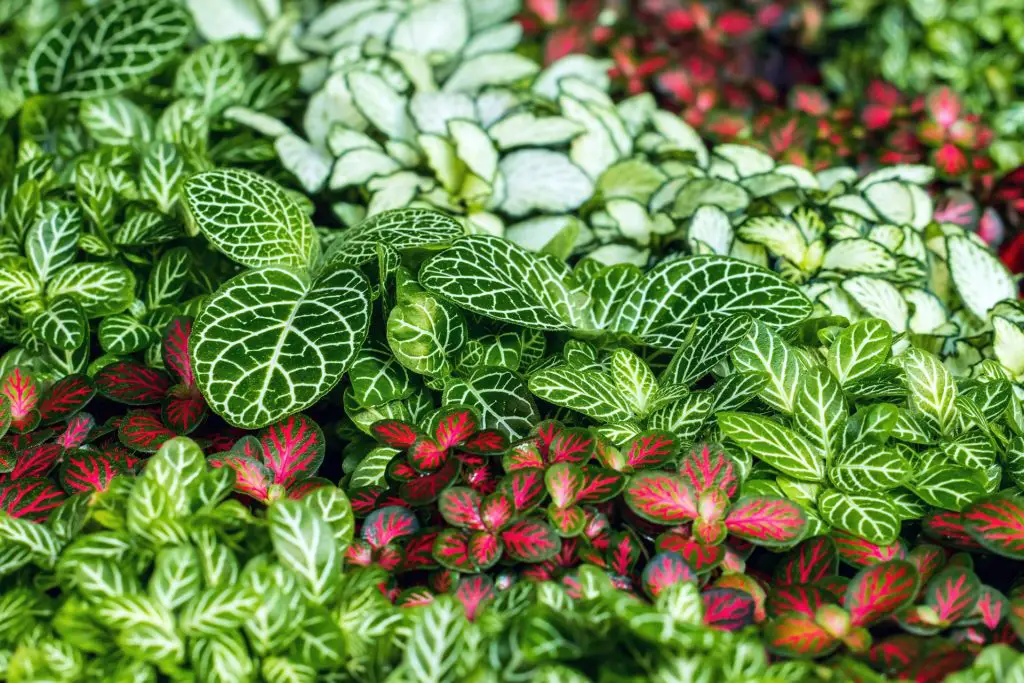
Caring for a nerve plant is like nurturing a friendship – it takes a little effort, but the rewards are well worth it. Here are some additional tips to help you cultivate a thriving Fittonia and enjoy its vibrant beauty for years to come.
Regular Rotation
Fittonia plants love to grow towards the light. To ensure even growth and prevent your plant from becoming lopsided, rotate it regularly. A quarter turn every week should do the trick.
Pruning for Perfection
Don’t be afraid to give your Fittonia a little trim now and then. Pruning helps encourage bushier growth and keeps your plant looking its best.
Snip off any leggy stems or yellowing leaves to maintain a compact, lush appearance.
Repotting for Room to Grow
As your Fittonia grows, it may outgrow its pot. Repotting every one to two years can give your plant more room to spread its roots.
Choose a pot that’s one size larger than the current one and use fresh, well-draining soil.
Watch for Signs of Stress
Keep an eye on your Fittonia for any signs of stress, such as wilting, yellowing leaves, or stunted growth.
These can be indicators of issues like overwatering, low humidity, or pest infestations. Addressing problems early can help keep your plant healthy.
Enjoy the Journey
Caring for a Fittonia is a rewarding experience that brings a touch of nature’s beauty into your home.
Take the time to enjoy the process, from watching new leaves unfurl to admiring the intricate vein patterns.
Your Fittonia is more than just a plant – it’s a living work of art.
Fittonia Fun Fact
Did you know that Fittonia plants are sometimes called mosaic plants because of their intricate vein patterns? It’s like having a natural mosaic masterpiece in your home!
16. How to Save a Fittonia Plant: Reviving Your Leafy Friend
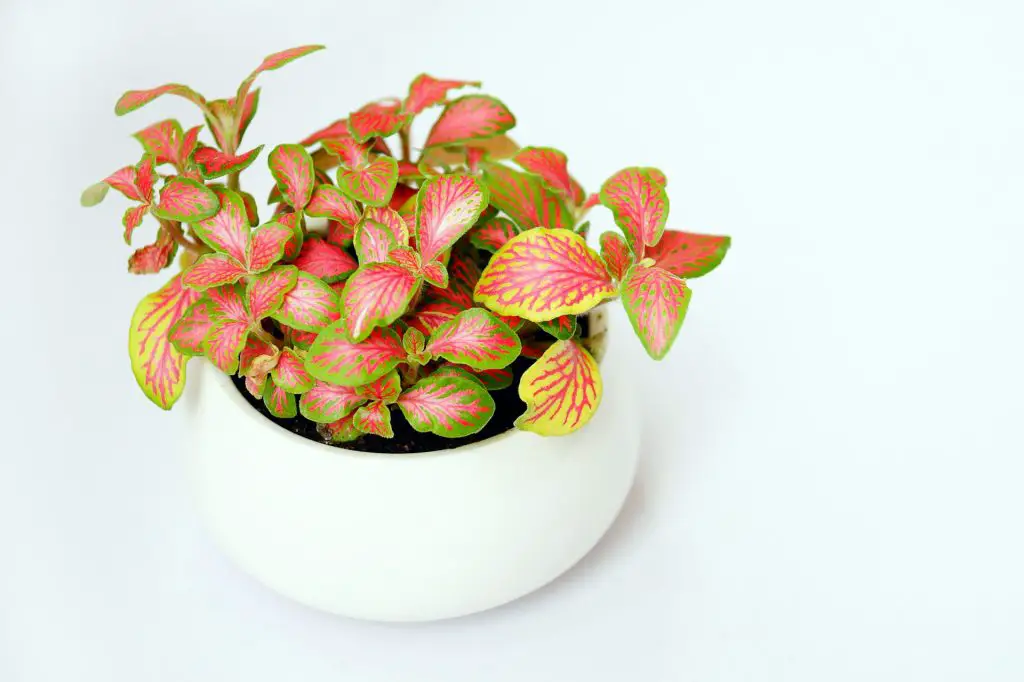
Don’t panic if your Fittonia seems to be on the brink of plant purgatory. With a little TLC and some quick action, you can often bring your struggling plant back to its former glory.
Let’s explore some rescue techniques for reviving your Fittonia.
Identify the Problem
First things first, figure out what’s causing the distress. Is the soil too wet or too dry? Is the plant getting too much or too little light?
Are there signs of pests or disease? Once you identify the issue, you can take steps to address it.
Water Woes
If overwatering is the culprit, let the soil dry out before watering again. If the roots are waterlogged, you may need to repot your Fittonia in fresh, well-draining soil.
On the flip side, if underwatering is the problem, give your plant a thorough drink and consider increasing your watering frequency.
Light Levels
Make sure your Fittonia is getting the right amount of light. If it’s been in direct sunlight, move it to a spot with bright, indirect light.
If it’s been in a too-shady area, give it a bit more light to help it recover.
Humidity Help
Fittonia plants love humidity. If your home is dry, try misting your plant regularly, placing it on a pebble tray with water, or using a humidifier to increase humidity levels.
Pest Patrol
Check for pests like spider mites, mealybugs, and aphids. If you find any, gently wipe them off with a damp cloth or treat your plant with insecticidal soap or neem oil.
Trim and Tidy
Prune away any dead or yellowing leaves to help your plant focus its energy on new growth. This can also improve airflow and reduce the risk of disease.
Give It Time
Once you’ve addressed the issue, be patient. It may take some time for your Fittonia to bounce back fully. Keep providing consistent care, and with a little luck, you’ll see signs of recovery soon.
A Second Chance
Reviving a struggling Fittonia can be a rewarding experience. With the right care and attention, your plant can return to its vibrant, leafy self, reminding you of the resilience and beauty of nature.
17. How to Get a Bushy Nerve Plant: Fostering Lush, Dense Growth
If you’re dreaming of a Fittonia that’s as full and bushy as a rainforest understory, you’re in luck!
Encouraging your nerve plant to grow thick and lush is all about providing the right care and a little extra attention.
Let’s dive into some tips for achieving that coveted bushy look.
Prune for Prosperity
Regular pruning is key to a bushy Fittonia. By snipping off the tips of the stems, you encourage the plant to branch out and become denser.
Use clean, sharp scissors to make clean cuts just above a leaf node. Don’t be afraid to give your plant a good trim – it will bounce back with even more vigor!
Pinch for Perfection
In addition to pruning, pinching off the growing tips of your Fittonia can also promote fuller growth.
Simply use your fingers to gently pinch off the tips of new growth. This signals the plant to produce more side shoots, resulting in a bushier appearance.
Let There Be Light
Proper lighting is crucial for a full and healthy nerve plant. Fittonia plants thrive in bright, indirect light.
If your plant is getting too little light, it may become leggy and sparse. Consider moving it to a brighter location or using grow lights to supplement natural light.
Feed for Foliage
Feeding your Fittonia a balanced liquid fertilizer during the growing season (spring and summer) can provide the nutrients it needs for robust growth.
Follow the instructions on the fertilizer package for the correct dosage and frequency.
Repot for Room to Grow
As your Fittonia grows, it may become root-bound in its current pot. Repotting into a slightly larger container can give the roots more room to spread out and support fuller growth.
Be sure to use fresh, well-draining soil when repotting.
Consistency Is Key
Maintaining consistent care is essential for a bushy nerve plant. Keep the soil evenly moist, provide adequate humidity, and protect your Fittonia from extreme temperature changes.
With consistent care, your plant will reward you with lush, dense growth.
A Full and Flourishing Fittonia
By following these tips and giving your nerve plant a little extra love, you’ll be well on your way to a beautifully bushy Fittonia. Enjoy the process and watch as your plant transforms into a vibrant, leafy masterpiece!
FAQs: Nerve Plant Care
Got questions about caring for your nerve plant? You’re not alone! Whether you’re a seasoned plant parent or a newbie, it’s natural to have queries about keeping your Fittonia healthy and happy.
That’s why we’ve compiled a list of frequently asked questions to help you navigate the world of nerve plant care.
Q. How much sun does a nerve plant need?
A. Nerve plants thrive in bright, indirect light. They should be kept away from direct sunlight, which can scorch their leaves. A spot near a window with sheer curtains or in a room with filtered light is ideal.
Q. How often should you water a nerve plant?
A. Water your nerve plant when the top inch of soil feels dry to the touch. This is usually about once a week, but it can vary depending on factors like temperature and humidity. The goal is to keep the soil consistently moist but not waterlogged.
Q. Should I mist my nerve plant?
A. Yes, misting your nerve plant can help maintain the high humidity levels it loves. Aim to mist it a few times a week, or more often if the air in your home is particularly dry.
Q. How do you make a nerve plant thrive?
A. To make a nerve plant thrive, provide it with bright, indirect light, keep the soil consistently moist, maintain high humidity, and feed it with a balanced liquid fertilizer during the growing season. Regular pruning and pinching can also encourage fuller growth.
Q. Why is my nerve plant suddenly dying?
A. A nerve plant may suddenly start dying due to overwatering, underwatering, low humidity, or a sudden change in temperature. Check the soil moisture and the plant’s environment to identify and address the issue.
Q. Should you bottom water a nerve plant?
A. Bottom watering can be beneficial for nerve plants as it encourages the roots to grow downward and helps prevent overwatering. Simply place the pot in a tray of water and allow the soil to absorb moisture from the bottom up for about 30 minutes.
Q. What does an overwatered nerve plant look like?
A. An overwatered nerve plant may have yellowing leaves, a mushy stem, and soggy soil. You might also notice a foul smell if root rot has set in.
Q. How do you make a nerve plant bushier?
A. To make a nerve plant bushier, regularly prune and pinch back the tips of the stems. This encourages the plant to branch out and become denser.
Q. Why does my nerve plant keep wilting?
A. A nerve plant may wilt due to underwatering, low humidity, or exposure to direct sunlight. Check the soil moisture and the plant’s environment to determine the cause and adjust your care routine accordingly.
Q. Can nerve plants be toxic to pets or children?
A. No, nerve plants are non-toxic to both pets and children, making them a safe choice for households with furry friends and little ones.
Conclusion: Embracing the Fittonia Care Journey
Congratulations! You’ve navigated through the lush world of nerve plant care, armed with tips and insights to help your Fittonia thrive.
Let’s take a moment to recap the key points:
- Light: Fittonia plants crave bright, indirect light. Shield them from harsh direct sunlight to keep their leaves vibrant.
- Water: Keep the soil consistently moist, but avoid waterlogging. Adjust your watering routine based on the plant’s environment and season.
- Humidity: These tropical beauties love high humidity. Mist them regularly or use a pebble tray or humidifier to keep the air moist.
- Soil: Opt for a well-draining soil mix, like a blend of coco coir and perlite, to ensure healthy root growth.
- Propagation: Expand your Fittonia family by propagating stem cuttings in water or soil.
- Common Issues: Stay vigilant for signs of overwatering, underwatering, and pests. Tackle problems early to keep your plant healthy.
Now that you’re equipped with the knowledge to care for your nerve plant, it’s time to embark on or continue your Fittonia journey.
Whether you’re nurturing your first plant or adding to your indoor garden, remember that patience, observation, and a little love go a long way.
Embrace the ups and downs of plant parenthood and revel in the joy of watching your Fittonia flourish. Happy gardening!
Read and learn more: Indoor Apartment Gardening: 15 Point Comprehensive Guide
References:
Looking to dive deeper into the world of nerve plant care? We’ve gathered a selection of reliable sources to help you expand your knowledge and ensure your Fittonia thrives. Whether you’re seeking expert advice or practical tips, these references are a treasure trove of information.
- Missouri Botanical Garden – Fittonia albivenis: A comprehensive overview of Fittonia, including its botanical characteristics and care requirements. Link
- North Carolina Extension Gardener Plant Toolbox – Fittonia spp.: Detailed information on Fittonia species, covering aspects such as growth habit, care tips, and propagation methods. Link
- University of Florida IFAS Extension – Foliage Plant Care: General tips on caring for foliage plants, including Fittonia, with insights on watering, light requirements, and common issues. Link
- Royal Horticultural Society – Fittonia: Expert advice on growing and caring for Fittonia plants, including troubleshooting common problems. Link
- Wikipedia – Fittonia Fittonia (nerve plant) is a genus of flowering plants in the acanthus family Acanthaceae, native to tropical rainforests in South America, mainly Peru. Link
These resources are just the beginning of your journey with your Fittonia. Armed with the right knowledge, you can create the perfect environment for your plant to flourish. Happy gardening!
Visit my Amazon Influencer Page for videos and gardening products Grow Your Own Garden













